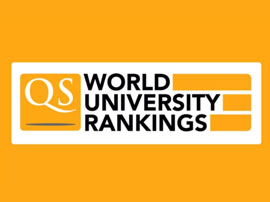国际学生入学条件
A baccalaureate or professional degree (or equivalent foreign credential) from an accredited college or university, earned by the expected date of entry into your graduate program. Admission to the PhD program prefers an undergraduate degree in the natural sciences that demonstrates competence in the areas of biology, chemistry and biological chemistry.An earned cumulative grade-point average (GPA) equivalent to at least 3.0 out of 4.0 in all previous undergraduate college-level course work is required by the OSU Graduate School. 600 Paper-based TOEFL 100 Internet-based TOEFL (IBT) 8.0 IELTS
展开
IDP—雅思考试联合主办方

雅思考试总分
8.0
了解更多
雅思考试指南
- 雅思总分:8
- 托福网考总分:100
- 托福笔试总分:600
- 其他语言考试:86 MELAB
CRICOS代码:
申请截止日期: 请与IDP顾问联系以获取详细信息。
课程简介
The achievement of an integrated understanding of biological function and interactions between multiple components of a biological system across hierarchical levels of analysis ranging from that of the gene to that of cell, tissue and organ is the next major frontier of biomedical science. Because of the inherent complexity of real biological systems, the development and analysis of computational models based directly on experimental data is necessary to achieve this understanding and translation to clinical practices. An overarching goal of the computational biology and bioinformatics area of research emphasis is to develop the insights and the technology needed to gather the information needed to quantify biological function and to develop detailed predictive biomedical models. These will be used to accurately describe normal physiological function, to understand mechanisms that underlie pathological processes, to discover new biomarkers and therapeutical targets for diseases, and to evaluate medical and surgical interventions. Transcript designation of computational biology and bioinformatics can include any of the following: 1) Training in the processing, analysis, mining, and integration of data from multiple sources such as genomic sequencing, epigenetics studies, gene and protein expression profiling, radiological studies, microscopy imagery, electrophysiological experiments, and numerical simulation studies, 2) Development of models to explain physiological and pathological processes, and 3) Development of database technology, data analysis techniques, high performance computing infrastructure, and systems software/middleware needed to carry out tasks associated with the aggregation and analysis of biomedical data, and needed to carry out biomedical simulations. This area of research emphasis will involve the integration of large-scale data analysis, management, processing, and visualization with biomedical informatics. We will engage trainees in a highly collaborative interdisciplinary research program on high throughput data analysis and integration for biomedical applications in high end computing environment. We will also provide access to a customized program of course work in biomedical informatics, computer science and in basic and translational biomedical sciences. Faculty members have diverse research interests which span analysis of gene sequence and gene and protein expression data, epigenetics, analysis and modeling of therapeutic and toxic drug effects, computational modeling of physiological systems, biomedical image processing and feature detection, visualization and development of database, data mining and data exploration algorithms and middleware.
展开







 预科
预科 奖学金
奖学金 实习机会
实习机会 在校学习
在校学习 跨境学习
跨境学习 校园授课-线上开始
校园授课-线上开始 在线/远程学习
在线/远程学习














 达尔豪斯大学
达尔豪斯大学

 达尔豪斯大学
达尔豪斯大学

 达尔豪斯大学
达尔豪斯大学

 达尔豪斯大学
达尔豪斯大学

 圣力嘉学院
圣力嘉学院

 滑铁卢大学
滑铁卢大学




















 美国
美国




